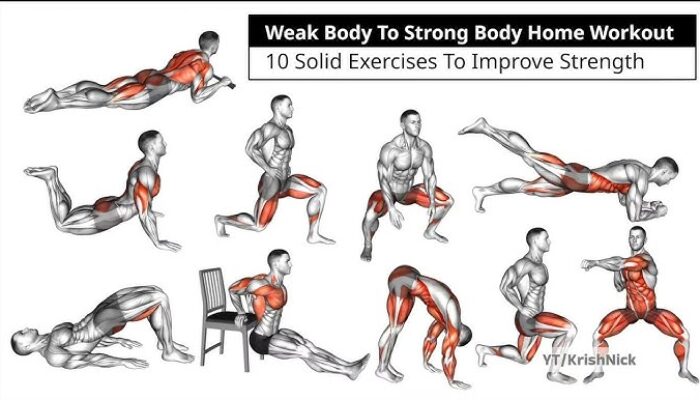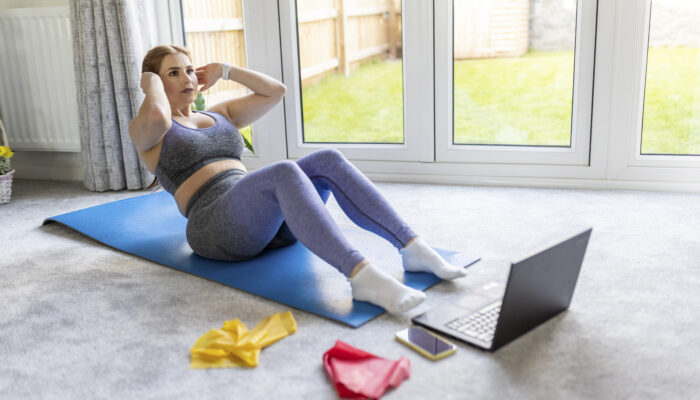In today’s fast-paced, digitally driven world, physical activity is often one of the first priorities to fall by the wayside. Between desk jobs, long commutes, and screen-heavy leisure time, millions of people lead increasingly sedentary lives — and the health consequences are serious. Regular exercise and consistent physical activity are not luxuries or hobbies. They are vital components of a healthy, fulfilling life, and the science behind their benefits is overwhelming and indisputable.
This article explores the importance of regular exercise, the benefits it provides to the body and mind, and how you can easily integrate more movement into your daily routine, regardless of your age or fitness level.

What Does It Mean to Be Physically Active?
Being active physically includes numerous forms of movement, not limited to gym attendance. It encompasses all movement that uses energy — from walking and cycling to gardening, dancing, or even cleaning your house. Exercise, in contrast, is a planned, structured subset of physical activity with the purpose of improving fitness.
The World Health Organization (WHO) recommends that adults aged 18–64 engage in at least:
- 150 to 300 minutes of moderate-intensity aerobic activity per week, or
- 75 to 150 minutes of vigorous-intensity aerobic activity, plus
- Muscle-strengthening activities Involving significant muscle groups on two or more occasions each week.
Children, older adults, and people with chronic illnesses may have different needs, but the universal principle is clear: move more, sit less.
Physical Benefits of Regular Exercise
- Heart Health
Exercise strengthens the heart muscle, improves circulation, lowers blood pressure, and helps regulate cholesterol levels — all crucial in preventing cardiovascular diseases, the leading cause of death globally.
- Weight Management
Regular physical activity burns calories and helps regulate appetite hormones. Combined with a healthy diet, exercise is essential for weight loss and maintenance.
- Stronger Muscles and Bones
Resistance training and weight-bearing exercises (like walking, running, or lifting weights) improve muscle strength and bone density, which are vital in preventing osteoporosis and reducing fall risks, especially as we age.
- Boosted Immune System
Moderate, consistent exercise enhances the immune system’s function, helping you fight off infections more effectively.
- Improved Metabolism
Exercise improves insulin sensitivity and glucose metabolism, reducing the risk of type 2 diabetes and supporting better energy levels throughout the day.
Mental and Emotional Benefits of Exercise
- Reduces Stress and Anxiety
Involvement in physical exercise triggers the secretion of endorphins, which serve as natural mood enhancers. It also helps to decrease the levels of the body’s stress hormones, such as adrenaline and cortisol.
- Improves Sleep
Regular movement helps regulate circadian rhythms and promotes deeper, more restful sleep. It’s particularly helpful for people suffering from insomnia or restlessness.
- Boosts Brain Health
Exercise improves cognitive function, sharpens memory, and even fosters the growth of new neural connections. It’s been shown to help delay or prevent cognitive decline, including dementia and Alzheimer’s disease.
- Increases Self-Esteem and Confidence
Achieving fitness goals, feeling stronger, or simply sticking to a routine can boost self-worth and empower individuals to feel more in control of their health.
Long-Term Impact: Adding Years to Your Life
Numerous studies have shown that regular exercise adds years to your life — and life to your years. It not only extends lifespan but also enhances quality of life by reducing the incidence of chronic diseases, mobility limitations, and cognitive decline. According to Harvard researchers, a mere 15 minutes of moderate exercise daily can lead to an increase in life expectancy of three years.

How to Stay Physically Active — Even If You’re Busy
- Start Small: If you’re inactive now, even 10-minute sessions a few times a day can make a difference.
- Incorporate Activity into Routine Tasks:
- Take stairs instead of elevators
- Opt for walking or cycling instead of using a car for short distances.
- Do squats or stretches during TV commercials
- Find Activities You Enjoy: Dancing, swimming, hiking, yoga — you’re more likely to stick with something that’s fun.
- Use Technology: Fitness trackers, apps, and online classes can help motivate and monitor your progress.
- Set Realistic Goals: Track progress, celebrate milestones, and adjust your plan as needed.
- Make It Social: It is not necessary to be physically fit to start. Social support can increase accountability and enjoyment.
Barriers to Physical Activity — and How to Overcome Them
- “I don’t have time.” → Break workouts into 10-minute chunks.
- “I’m too tired.” → Ironically, exercise boosts energy and fights fatigue.
- “I’m not fit enough.” → You can commence without being fit. Begin at your level and progress gradually.
- “Exercise is boring.” → Mix things up. Try new activities until you find what excites you.
Conclusion: Make Movement a Lifestyle
Regular exercise and consistent physical activity are foundational pillars of lifelong wellness. They don’t require expensive equipment, athletic skill, or hours of free time — just a willingness to move and make your health a priority.
No matter your age, background, or current fitness level, it’s never too late to start. The quest for enhanced well-being commences with a solitary step — and every step matters.
Move your body. Nourish your mind. Strengthen your spirit. Live fully.


